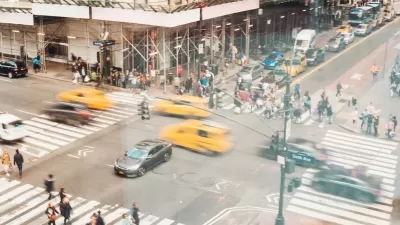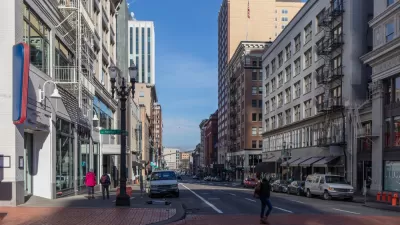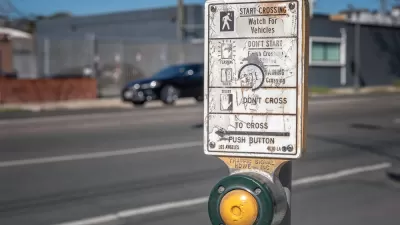U.S. traffic fatalities hit a twenty-year peak in the first quarter of 2022.

The first quarter of 2022 saw the highest number of traffic deaths in two decades, reports Daniel C. Vock for Route Fifty. Dashing hopes that the trend of rising fatalities would slow as the risky behaviors exacerbated by the pandemic subsided, data show that 9,540 people died on U.S. roads between January and March of 2022.
The trend isn’t uniform across the country. “The highest increases came in the mid-Atlantic region, which saw a 52% jump in deaths,” while road deaths in the far western states, the only region to see a decrease, declined by 11 percent.
According to Vock, “Safety advocates are growing increasingly frustrated that the issue has not sparked more concern – or at least a new approach – among policymakers at the federal, state and local levels.” Critics of the National Highway Traffic Safety Administration (NHTSA) say the federal agency could do more by regulating vehicle design to avoid blind spots, reining in Tesla and other carmakers who disingenuously promote autonomous features that lead to unsafe driving, and adjusting vehicle safety tests to include pedestrians and other people outside the car.
While many safety efforts focus on driver behavior, some advocates say the government should take a stronger role in regulating the vehicles and infrastructure that can help keep people safe by applying a ‘safe systems’ approach. As Jessie Singer points out in her book of the same name, “there are no accidents.” To protect citizens, the government can, as Singer puts it, “Apply a harm-reduction model to every corner of the built environment.”
FULL STORY: US Road Fatalities Soared in Early 2022

Manufactured Crisis: Losing the Nation’s Largest Source of Unsubsidized Affordable Housing
Manufactured housing communities have long been an affordable housing option for millions of people living in the U.S., but that affordability is disappearing rapidly. How did we get here?

Americans May Be Stuck — But Why?
Americans are moving a lot less than they once did, and that is a problem. While Yoni Applebaum, in his highly-publicized article Stuck, gets the reasons badly wrong, it's still important to ask: why are we moving so much less than before?

Using Old Oil and Gas Wells for Green Energy Storage
Penn State researchers have found that repurposing abandoned oil and gas wells for geothermal-assisted compressed-air energy storage can boost efficiency, reduce environmental risks, and support clean energy and job transitions.

Greening Oakland’s School Grounds
With help from community partners like the Trust for Public Land, Oakland Unified School District is turning barren, asphalt-covered schoolyards into vibrant, green spaces that support outdoor learning, play, and student well-being.

California Governor Suspends CEQA Reviews for Utilities in Fire Areas
Utility restoration efforts in areas affected by the January wildfires in Los Angeles will be exempt from environmental regulations to speed up the rebuilding of essential infrastructure.

Native American Communities Prepare to Lead on Environmental Stewardship
In the face of federal threats to public lands and conservation efforts, indigenous groups continue to model nature-centered conservation efforts.
Urban Design for Planners 1: Software Tools
This six-course series explores essential urban design concepts using open source software and equips planners with the tools they need to participate fully in the urban design process.
Planning for Universal Design
Learn the tools for implementing Universal Design in planning regulations.
Heyer Gruel & Associates PA
City of Moreno Valley
Institute for Housing and Urban Development Studies (IHS)
City of Grandview
Harvard GSD Executive Education
Salt Lake City
NYU Wagner Graduate School of Public Service
City of Cambridge, Maryland





























